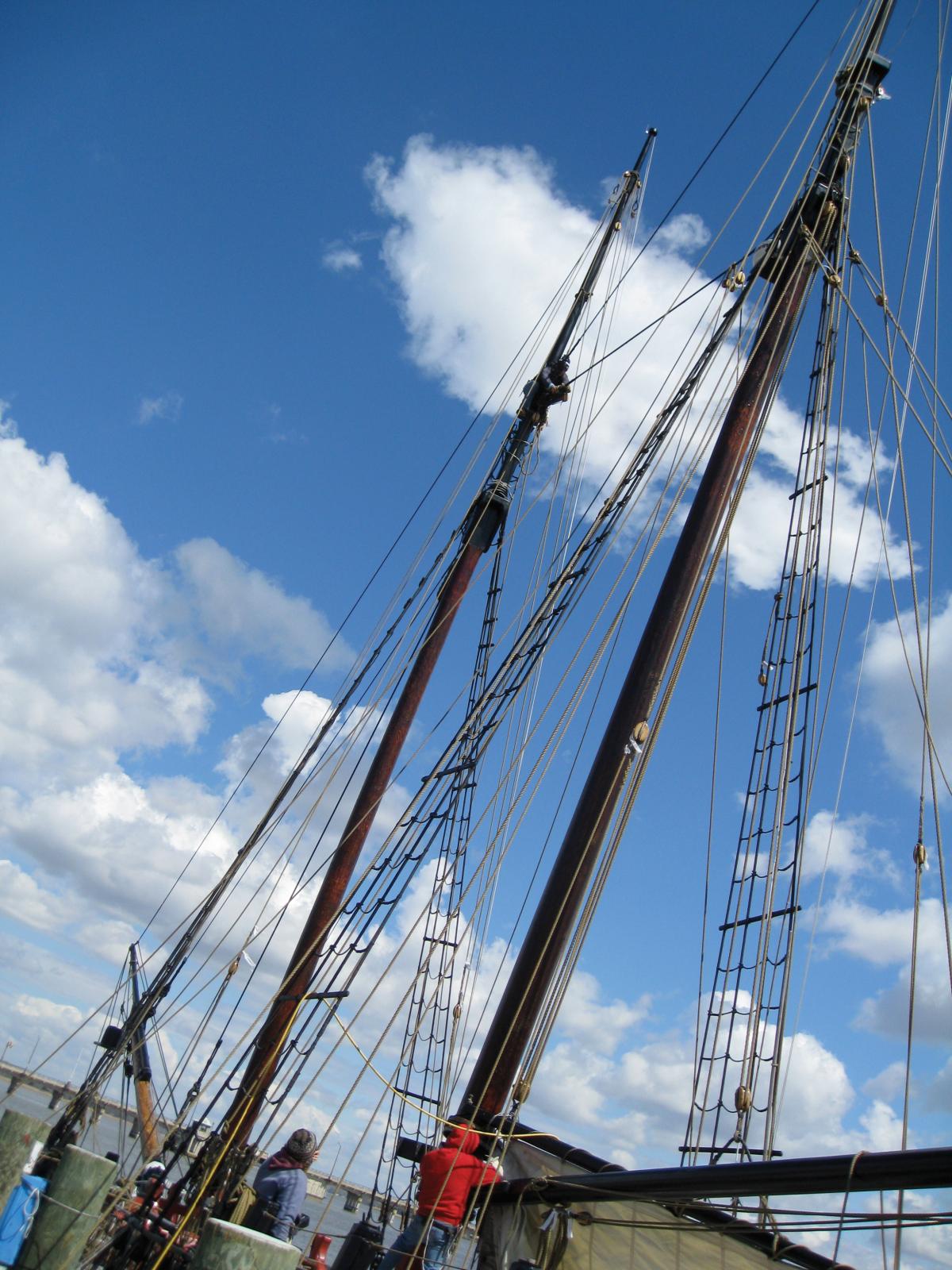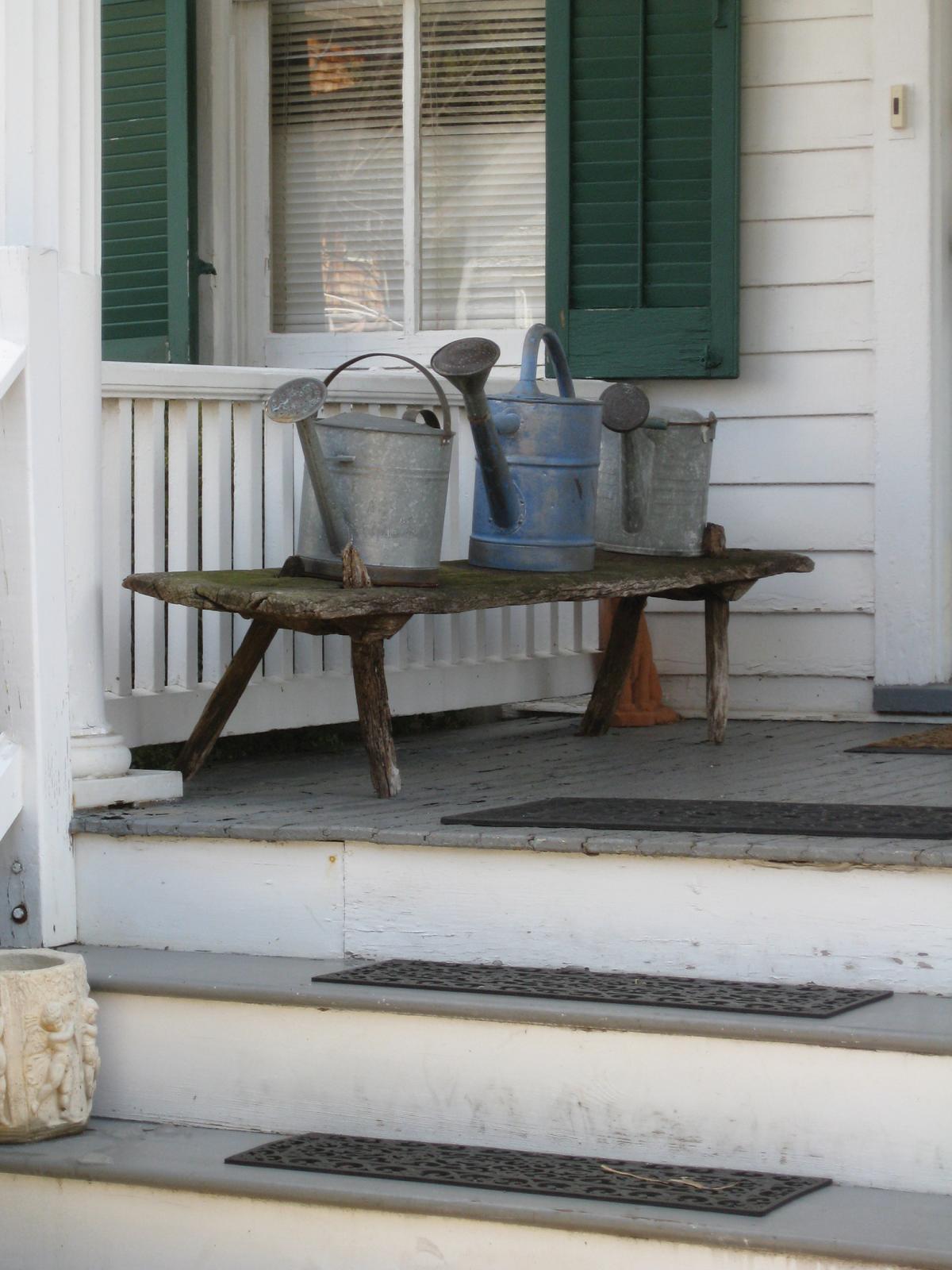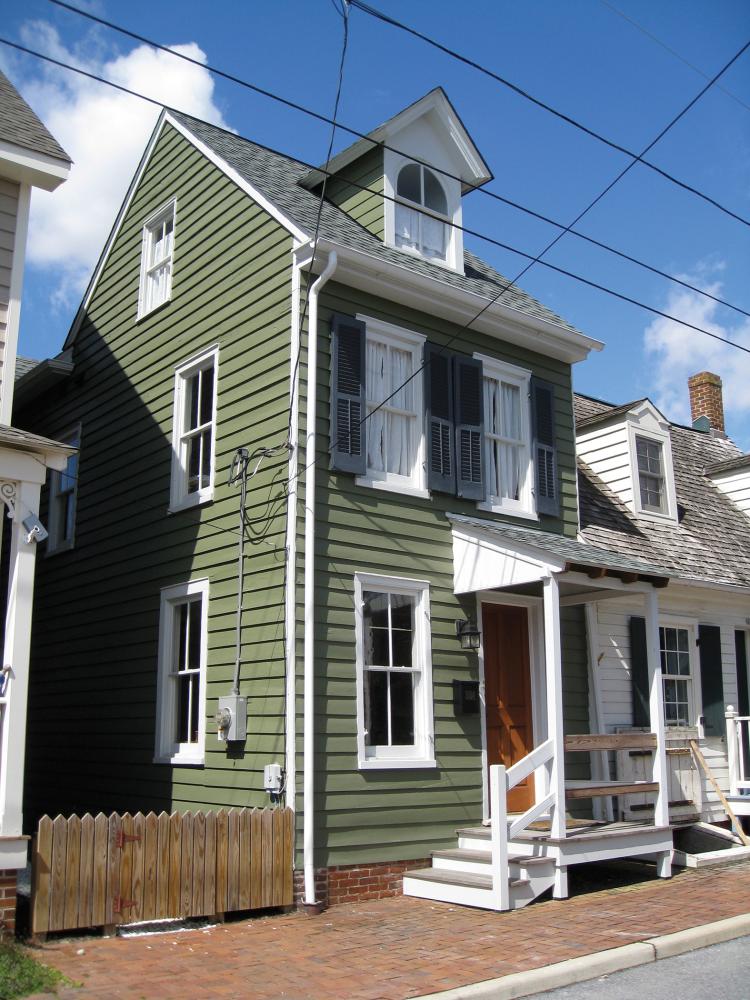Adam Goodheart, the historian and author of the best-selling 1861: The Civil War Awakening, doesn’t have the right key with him when we arrive at the Patrick Henry Fellows’ Residence at Washington College in Chestertown, Maryland. The house is owned by the C.V. Starr Center, and Goodheart is the director, but we are momentarily locked out.
We had been talking earlier about the town’s old brick sidewalks and, as we wait for someone to bring a key, he returns to the history at our feet. He draws my attention to the flower box along the curb. Its edge is marked by blue-gray stones that, he says, have been traced to the shore of Devon, England. They were carried here by trading ships on which they served as ballast. Centuries later, these rocks are still in evidence all around Chestertown, which has very little in the way of indigenous rock but was once a bustling international port.
Next I am learning about the Patrick Henry house, its brick exterior (Flemish bond, suggestive of relative affluence) and its original owner, John Buck, an Englishman. The house was built around 1735, apparently as a residence for Buck’s business agent in the colonies. Buck himself lived in England, from where he shipped and leased convicts as indentured servants.
The house now serves as a residence for the Patrick Henry Fellow, a visiting scholar who, according to the selection criteria, is a writer working on a book that “addresses the history and/or legacy—broadly defined—of the American Revolution and the nation’s founding ideas.” This year’s fellow is Neal Gabler, who is writing a biography of the late Senator Ted Kennedy. As we go inside, Goodheart continues talking about the restoration of the building, while delivering short biographical sketches of the worthies whose oil portraits hang on the walls.
Standing in the spacious, well-lit kitchen, I say what a lovely home this is. That is exactly how they wanted it, says Goodheart: a nice home, a nice fellowship, optimal conditions for writing. But the vital element may be Chestertown itself. The place oozes history, like a quiet out-of-the-way library or museum, cherished by those in the know but not so prominent that it has ever become the object of major makeover fantasies.
I was spending the day, which began with coffee at the Evergrain Bread Company, where sugar-dusted, dough-twisted sun buns are the specialty. Goodheart, I quickly learned, is not a PhD and never attended graduate school. He worked as a journalist before coming to the C.V. Starr Center, which in 2007 received a major challenge grant from NEH to endow its fellowship program, and purchase and renovate the fellows’ house.
After graduating from Harvard, Goodheart got his start as the first-hired staff editor at Civilization, a magazine of culture that was brought out by a private publisher from the Library of Congress. Although a critical success with a quarter million subscribers, the magazine folded after only six years, and Goodheart became a full-time freelancer, writing for the New York Times and magazines such as Travel and Leisure, National Geographic, and GQ.
Life was good: One assignment took him to France to write about remnants of the Renaissance in the Loire Valley. When not on the road, he was living in Washington, D.C., and not thinking about pursuing an academic career until Ted Widmer reached out to him.
Widmer didn’t know Goodheart, but he knew of him, having taught at Harvard in the history and literature program in which Goodheart had studied. Widmer had interrupted his teaching career to work as a speechwriter for the Clinton administration in its second term. After that, he was hired by the college to build the Starr Center into a program for history-writing. For a small college founded in 1782, on whose board George Washington once sat, it was logical to emphasize history and especially the eighteenth century.
But how to do it well and reach a large audience? Everyone interested in finding an audience for history labors with some version of the following question: How to make dead people vivid? Widmer gave a lot of thought to George Washington, who is constantly evoked at Washington College and, as a subject, sometimes suffers from overfamiliarity. “He’s certainly famous,” says Widmer, “but he is not always interesting.”
The college began sponsoring, in partnership with the Gilder Lehrman Institute of American History and George Washington’s Mount Vernon, the George Washington Book Prize, a $50,000 award bestowed annually on a book relating to the founding era. But Widmer, himself an author and editor of several books, believed the center should go even further to actively cultivate good writing.
Goodheart’s newspaper and magazine articles combined some of the qualities that Widmer was hoping the Starr Center would promote. “He didn’t write like an academic. He did love history, that was clear, but he talked about history in ways that connected it to the present and always found interesting aspects of a historical problem to work out.”
Driving a used car that happened to bear a Washington College sticker in the back window from a previous owner, Goodheart arrived for a visit. He was already under contract to write a book retracing the steps of Frederick Law Olmsted, who in the 1850s traveled through the Deep South to report on the practice of slavery in the United States. It was definitely the kind of thing that Widmer liked: history that takes you out of the house and makes the past more visible in the world of today. The Starr Center does a lot to promote experiential learning, for example, sending students down the Chester River in a reconstructed eighteenth-century revenue cutter to explore the river’s significance in local history.
Thinking students would respond to Goodheart and his travel-history project, Widmer offered him a fellowship. From 2002 to 2006, Goodheart hung his hat at the Starr Center as a visiting fellow with some teaching duties. Only the Olmsted project didn’t actually work out. The travel writing “didn’t really gel,” Goodheart says, but he had amassed a lot of research about slavery and America in the 1850s with the drumbeat of war growing ever louder. For a while he toyed with writing a book just about slavery, but in working with students he found a new frame for his story.
In the summer of 2008, in a crumbling plantation house on the Eastern Shore of Maryland, my students and I discovered an attic full of family papers spanning thirteen generations of the owner’s family—more than three hundred years of American history. . . . But what fascinated me the most was a small bundle of old documents, wrapped in paper and bound up tightly with a faded yellow silk ribbon that clearly had not been untied in more than a century. On the outside of the wrapper was a date: 1861.
So Goodheart wrote in the opening pages of 1861, a work that looks to tell the story of how Americans experienced the first year of the most destructive war in our history. It is a book that, like the C.V. Starr Center, wants history to be every bit as readable as possible. In a way, it is also a proof of concept for Ted Widmer’s plan to make the little burg of Chestertown a hot spot for history-writing. It even highlights the benefits of teaching to writing and makes you appreciative of how much trial, failure, perseverance, and support an ambitious book demands.
Next I talk with Neal Gabler, who has been at the Starr Center since January and is no stranger to the trials of book writing. The well-known biographer of Walt Disney and Walter Winchell has been working on a life of Senator Kennedy for over five years and estimates he will need another two or three years to finish. As I enter, Gabler is busy e-mailing a librarian in Mississippi, trying to get his hands on a transcript of an eleven-minute audio recording of Senator James Eastland talking about Kennedy. It could be valuable; it could be useless. But he knows he doesn’t want to make a special trip for it.
Gabler says he is at his desk in the Custom House, where the Starr Center has its offices and a classroom, from morning til night, seven days a week. “The clock is ticking,” he says, cheerfully worried and extremely grateful for the support of this fellowship. “The kind of work I do will soon be extinct.”
He has benefited from two other smaller fellowships, but the road is long. Kennedy, a leading light of the Democratic party, was in the Senate for almost forty-seven years; was involved in a great array of legislative work; ran for president; was brought low by a couple of scandals; and is, of course, a member of the most storied American family of the twentieth century. “I assume this is going to be a very sizable book.”
Gabler is a visiting professor at SUNY Stony Brook, where he teaches writing, but is otherwise, more or less, an independent scholar. He is partly supported by his writing and so does not publish without thinking seriously about how to find a sizable audience. Unless your name is Robert Caro, David McCullough, or Doris Kearns Goodwin, it’s inconceivable that a biographer will receive an advance on which to live long enough to finish a work of such magnitude. Gabler’s position at Stony Brook comes with benefits, but many an independent scholar finds himself lacking the usual perks of full-time employment such as health care, an office, and institutional support for research.
This creates a sharp demand for fellowships like this one, which was designed with independent scholars in mind. In return, not only does the Starr Center get to advance Ted Widmer’s mission to bring about good writing, but Washington College students get to take a class in biography with Neal Gabler, which Goodheart likens to having Michael Phelps as your swim coach.
At Washington College, says Goodheart, everything must come back to teaching. Hearing this, I ask to join his afternoon class, “Chestertown’s America.”
The students, working in teams of two and three, are presenting research on the history of four eighteenth-century houses all within walking distance of the Starr Center. They have consulted archival documents (town records, family wills, bills of sale, and much else) concerning the history of the properties and the families who lived on them; they have also interviewed the current owners. They speak fluently about property lines, windows, doors, crown molding, renovations, and so on until an unwitting visitor might mistake this for a class in architectural history.
The students know which owners had slaves, which had indentured servants, which were abolitionists, which families were respectable and which were not. They know how to move from concrete fact to explanation and even speculation when the trail of fact grows cold, but without losing sight of the difference, as when the bars on a cellar window are presented only as possible evidence of the space having been used to hold slaves, or when the fake mahogany surface of a door is more confidently connected to the problem of British troops commandeering luxury items. In short, they are learning the lesson of Ted Widmer and Adam Goodheart: how to find the telling detail and connect with an audience.
Discussing the elaborate double staircase in another historic mansion, the presenting student explains how the architect, out of deference to God, deliberately inserted an imperfection into the design with the subtraction of a single baluster. I ask how long the students have been working on this assignment and am stunned by the answer: two weeks.








